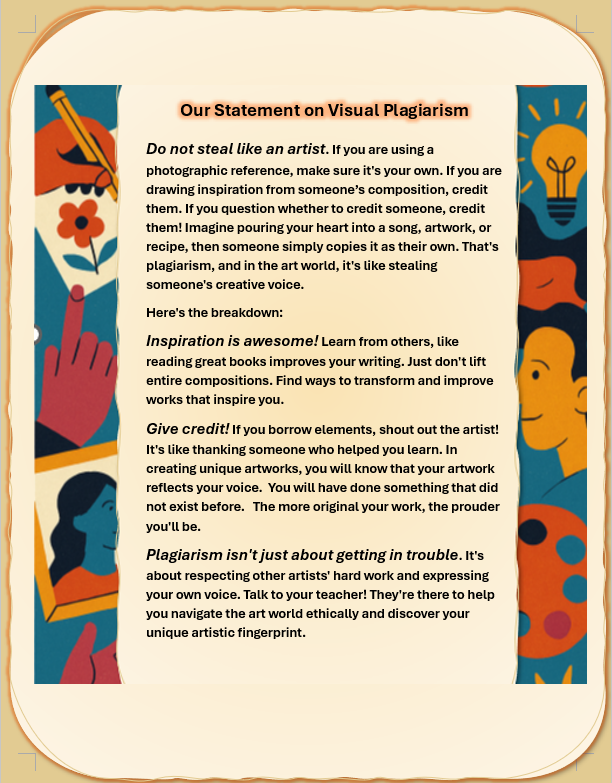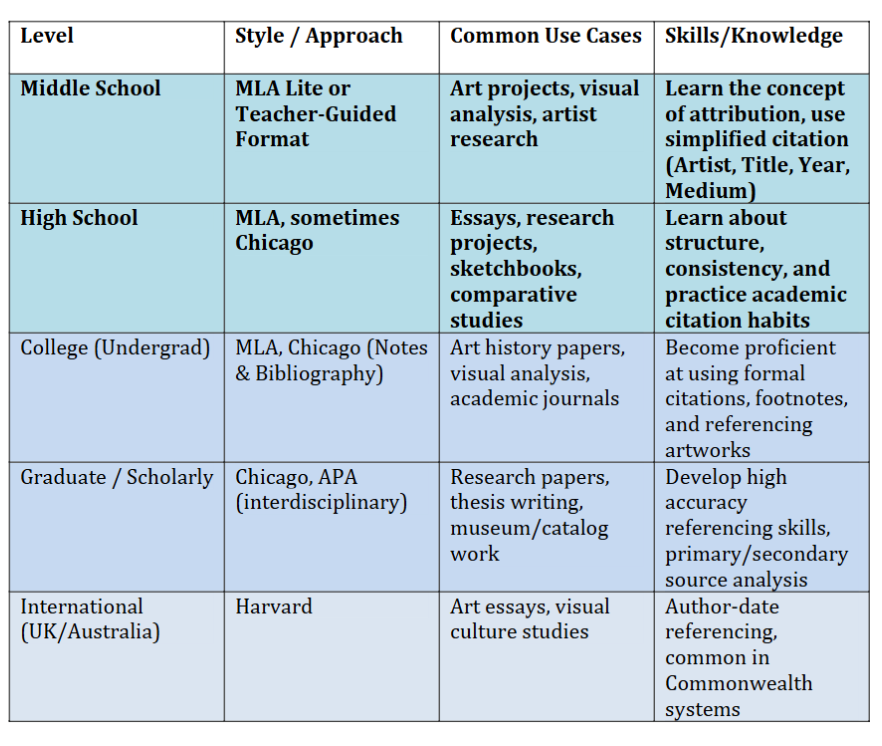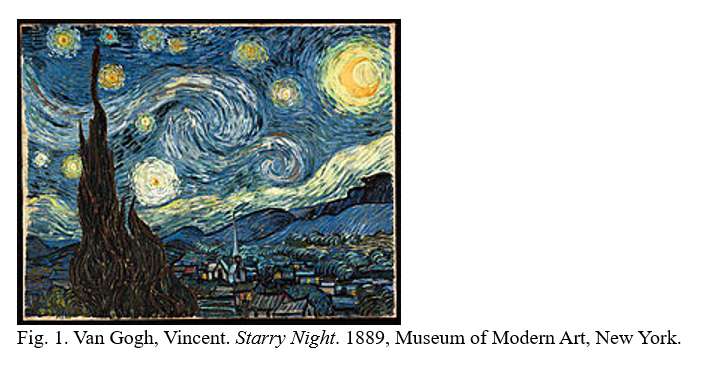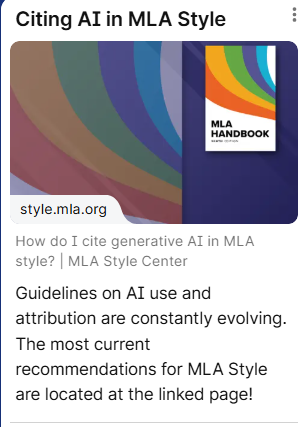The Arts
 Processing Request
Processing Request

- Oxford/Grove Art Online A comprehensive art encyclopedia. Go to Tools and Resources for added features including timelines, pronunciation guides, and a visual search.
- Art and Architecture Online Full-text of 100s of journals and 1000s of images from visual arts, film, urban studies, archeology, etc.
Multidisciplinary
- ABC CLIO - Pop Cuture Universe Find articles, images, and analysis on visual trends, media, and cultural movements that can inspire and support your art projects.
- ARTSTOR Image Search at JSTOR JSTOR now includes Artstor image search as well the content we are familiar with: full-text journal articles, e-books, primary sources from the 16th century to 2019. Includes academic resources in humanities and sciences. Login with your TAS Microsoft Email Address when prompted. This allows you to use the AI search tool, which may increase the relevance of your results.
History Encyclopedia
- Modern World History Good for background information and primary sources from the mid-15th century to the present.
Current Magazine Subscriptions
Browse color current issues of the below art magazines.
- Sora - Art Almanac, Art Asia Pacific, et al.
- Flipster - ArtNews, Art in America & Communication Arts.
- PressReader - International art magazines.
Note: Stop by and see a Librarian if ever you are stuck.
There are many print books on specific artists and movements. Search your artist's name or era/movement in Destiny. If you find a book from the bookroom, follow these instructions. We have many online art journals that you can find searching (link to Databases, Books and Ebooks). Ask one of our librarians to help you find information about your topic.
Museums, galleries, and other organizations digitize images, feature essays, and publish exhibition notes online. Below are only some examples.
General Art History and Art Sites
- SmartHistory
Essays, textbooks,& videos by 500+ art historians, artists, and curators writing with a non-colonial lens. Has AP specific examples.
- Google Cultural Institute Collections
Discover artworks, collections, and stories from all around the world.
- Art21
Chronicles contemporary art and artists.
Museum Sites
Which Citation Style Should I Use?
The table below outlines the recommended citation styles you will encounter at different stages in your visual arts academic journey. It is intended to help you select the appropriate
citation style with help from your teachers

How to Format Citations in MLA Style
Below we focus on citing images and artworks in MLA Style. If after looking at the style recommendations in the table you find that you need to use Chicago, check out the Beginners Guide to Citing in Chicago Style Manual
To cite an image, enter the creator of the image, the title of the image, the date of composition, and the location of the image, which would be the name of a physical location if you viewed the image in person. If you viewed the image online, provide the name of the website and the URL. If you find the image in a print work, provide the publication information for the print work, including a page number if there is one (section numbers or chapter titles may be provided in the rare case that a book lacks page numbers or they are no longer easy to read).
*Note that in your bibliographic citation, titles are written in italics. Bibliographic entries (your list of sources, located at the bottom of your paper) are formatted with a hanging indent.
Include the name of the artist, the title of the work, the date of composition, and the name of the museum along with the city in which the museum is located:
An Image in a book
Treat the image as a work within another work. To do so, list any relevant information about the image supplied by the author, then write down the publication information for the book.
Velázquez, Diego. An Old Woman Cooking Eggs. Circa 1618, Scottish National Gallery. The Vanishing Velázquez: A Nineteenth-Century Bookseller’s Obsession with a Lost Masterpiece, by Laura Cumming, Scribner, 2016, p. 27.
Cat photographed with Diego Velázquez’s Old Woman Cooking with Eggs. Cat Photobombs of Famous Art, edited by Calliope Sanderson, Meow Publishers, 2017, plate 7.
A Painting Viewed Online
Include the name of the website as the title of the container, followed by the publisher of the website and the URL. Omit the publisher if it is the same as the name of the Website. Always remove the hyperlink (deactivate the URL) before submitting your bibliography.
Creator’s Last name, First name. “Title of the digital image.” Publication Date, title of website, Web address.
Bearden, Romare. The Train. 1975. MOMA, www.moma.org/collection/works/65232?locale=en.
An image of a work of art posted on Wikimedia
If for example, you find an image of Pieter Bruegel the Elder’s painting, Children’s Games on Wikimedia, it is usual to credit the artist, year of creation, and location, which in this case is Wikimedia. Give the exact URL in case there are other copies of the image on different Wikimedia pages.
Bruegel, Pieter, the Elder. Children’s games. 1560. Wikimedia, commons.wikimedia.org/wiki/file:pierterBruegeltheelder_Children_Games.jpg.
Street art
As a rule of thumb, you would cite street art that you viewed in physical location by describing it at length in the body of your paper. That is, the credit may be given as an intext citation. It usually does not require a bibliographic entry, unless the description is too long to fit into your paper smoothly. Either way, include the title if available or description; the artist if known, the date you viewed the street art as the Publication Date (or the date it was created, if you happen to have that information). In other words, include all the information you know. Note that known titles of works or their containers (such as books) are usually written in italics, but descriptions are written in regular font. Follow these four examples.
Geraluz. Mural of a pair of hooded warblers. 1 Feb. 2022, 522 West 147th St., New York City.
On the side of the building at 522 West 147th Street in New York City is Geraluz’s mural of a pair of hooded warblers perched on a stalk of bird’s-foot violet.
TOTEM. Mural of a rough-legged hawk. 2021, 2157 Amsterdam Ave., New York City.
Geraluz. Mural of a pair of hooded warblers. 1 Feb. 2022, 522 West 147th St., New York City.
Street art found online or in a book
To cite a photograph of street art if it has been published on a website or a book, your citation should include the name of the artist as the Author, the title or a description of the street art, and the website where you accessed the photo, followed by the URL in the Location element; or the publication information of the book (book author, title, publisher, year).
ATM. Mural of a song thrush. ATM Street Art, atmstreetart.com/project/song-thrush/.
Movies, Videos, and Television Shows
To create a citation for a movie or television show, list the title of the work and the name of the director. Under the Publisher, enter the name of the company that produced the work, followed by the release date. You might include other elements, such as additional contributors, but only if they add value to your topic. For movies accessed on a streaming service, provide the platform name (or provide a website name, date uploaded, and URL if applicable).
A Television Show Viewed on Physical Media (such as a DVD created at a different date from the show itself).
Captions
In MLA Style, Illustrative visual material other than a table—for example, a photograph, map, drawing, graph, or chart—should be labeled Figure (usually abbreviated Fig.), assigned an Arabic numeral, and given a caption. The label and caption will appear directly below an illustration and have the same one-inch margins as the text of your paper.

When you provide full bibliographic details in a caption, convert the periods normally used in a bibliographic entry into semicolons:
Fig. 1. Vincent van Gogh; The Olive Trees; 1889; Museum of Modern Art, 2001; postcard.
Otherwise, we use commas when we provide an abbreviated caption:
Fig. 5. Mary Cassatt, Mother and Child, Wichita Art Museum.
How do I Cite AI?
Click on the image to go to the most current recommendations for citing AI in MLA Style.
.png)

